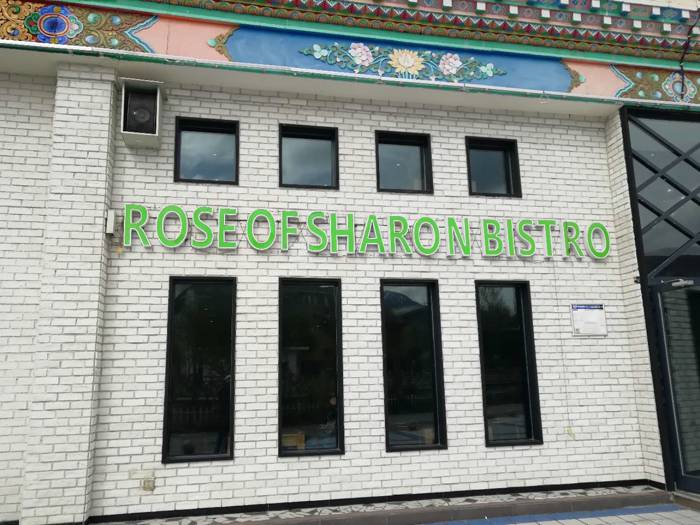To travel safely and healthily through Tibet, food is essential to prevent unnecessary illness or trouble in the middle of a wonderful trip. We always suggest that our clients choose the restaurant carefully and eat light meals on the day of their first arrival in Lhasa.
You will also probably be offered Tibetan tea at some point; a salty tea made of yak butter, milk, salt, and tea leaves. While Tibetans love it, it is an acquired taste for most foreigners. Tibetans are very hospitable and will serve you tea continuously. You are welcome to take a sip or two out of respect but the host will keep refilling your cup. It is also OK to ask for hot water or sweat tea if butter tea is not to your liking.
There are just a few Tibetan restaurants specializing in local fare, and the further you go from Lhasa, the less traditional food you will find. Most restaurants in Tibet are Chinese and serve spicy Sichuan-style dishes. The food is hot and many dishes are stir-fried, eliminating most safety concerns. Most restaurants are safe to eat in, but if it looks deserted and dirty, or you just feel uncomfortable, you should probably seek another option.
Guesthouses cater to backpackers and the occasional hostel or hip restaurant will offer a Western breakfast menu of pancakes with honey and bananas, yogurt, or cereal. Otherwise, most hotels will serve a Chinese-style breakfast, including steamed dumplings, eggs boiled or scrambled with tomatoes, hot veggies, a bland form of rice pudding, and tea.
Vegetarians will have no trouble finding vegetable, noodle, and tofu dishes in Chinese restaurants. While you may get tired of the same words over and over, you are bound to find a favorite; whether it be spicy eggplant, fried green beans, or spicy tofu (watch out for tofu and meat combinations).
Water: Tap water is not considered safe for drinking for most Westerners, but is OK for brushing your teeth with. We recommend purchasing bottled water, bringing purification tablets, or boiling your own water if trekking. Note: There are no recycling facilities in Tibet, so please be mindful of your waste. You may be able to save your plastic bottles and turn them in at a convenience store, where they have a slightly better chance of being carted off to a landfill or the rare recycling plant in China. It is our most important to maintain the Tibetan environment for our future generations.
Restaurants in Tibet
Recommended Restaurants In Tibet

Yushu Tu Ba Wan Restaurant
Yushu Tu Ba Wan Restaurant is located near Tibetan Medicine Hospital in Yushu...
More Details
Sichuan Restaurant
This restaurant is located near to Samye monastery town people’s government, you...
More Details
Four Seasons Garden Eco Café
This café restaurant is located quite near to the old town of...
More Details
Kyichu Restaurant
This is one of the best restaurant in Lhasa. The restaurant is...
More Details
Third Eye Restaurant
The Third Eye Restaurant is located in Shigatse, Tibet. It is a local restaurant...
More Details
Ancestral Forbidden City Restaurant
This Tibetan restaurant is located at Gaqu alley and quite near to...
More Details
Tashi Restaurant
Tashi restaurant is located in Shigatse, Tibet. It is one of the...
More Details
Mayke Ame Restaurant
Mayke Ame Restaurant is one of the most popular restaurants in Lhasa. It...
More Details
Tingri Qomolangma Resort Restaurant
Qomolangma resort restaurant is located in the heart of Tingri county. It...
More Details
Tashi Restaurant in Gyantse
This restaurant is run by Nepali which has a branch in Shigatse....
More Details
Lhasa Kitchen
It is located right in front of the Jokhang temple and nice...
More Details
Gyantse Kitchen
The restaurant is located in Gyantse town. This place is quite popular...
More Details
Amdo Restaurant
Amdo restaurant is located in old Tingri town. It is one of...
More Details
Rose of Sharon Bistro Restaurant
The Rose of Sharon Bistro Restaurant is located at heart of Yushu...
More Details
Mt Everest Restaurant
Mt Everest Restaurant is located in Tingri county which is attached with...
More Details
Shigatse Wordo Kitchen
Shigatse Wordo Kitchen Shigatse Wordo Kitchen is located at the heart of...
More Details
Qongmulama Restaurant
Qongmulama restaurant is located in opposite to China Post office in Yushu City....
More Details
House of Shambhala Restaurant
The House of Shambhala Restaurant is located at heart of Lhasa city, Tibet. It...
More Details
Tibetan Family Kitchen
Tibetan family kitchen is located at Lhasa city. The restaurant has two floors...
More Details
Aku Tonpa restaurant
This restaurant is located 700m away from the Samye monastery, this is...
More Details
Woeser Zedroe Tibetan Restaurant
The Woeser Zedroe Tibetan Restaurant is located in Lhasa and it is...
More Details
Songtsen Tibetan Restaurant
Songtsen Tibetan Restaurant is located in Shigatse, Tibet. It is one of the...
More Details
Nepali Restaurant Yushu
Nepali restaurant is located in Yushu city. It is the one Nepali restaurant...
More Details
Gyantse Monastery Restaurant
This restaurant is perfectly located in the courtyard of Pelkor Chöde. This...
More Details
Dunya Restaurant
One of the best places to eat in Lhasa is Dunya restaurant....
More Details
Po Ba Tsang Restaurant
Po Ba Tsang Restaurant is located in Lhasa. It is one of...
More Details
Tashi I Restaurant
There are two Tashi Restaurant in Lhasa- Tashi 1 and Tashi 2. Tashi 1...
More Details
Chongqing Xiaolongkan Old Hot Pot (Shannan Branch)
Xiaolongkan in Shannan is very close to Tan Yutou and People's Canteen,...
More Details
Holy Yushu Restaurant
The Holy Yushu Restaurant is located in Yushu city which is the...
More Details
Lhasa Namaste Restaurant
Lhasa Namaste Restaurant serves Tibetan, Nepalese, Indian, Chinese and Western food. It is...
More Details